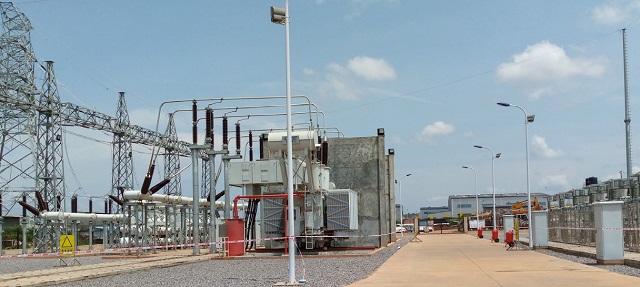
But manufacturers want power to come at cheaper price to enhance their competitiveness
Kampala, Uganda | JULIUS BUSINGE | Industries operating within Kampala Industrial and Business Park, Namanve, are now receiving reliable, stable, quality and adequate electricity following Uganda Electricity Transmission Company Limited’s bold step to install 189MVA, 132/33kv Namanve South Industrial Park electricity substation.
Mark Namungo, the project manager in charge of electrification of industrial parks at UETCL said, since the commissioning was done on Jan.26, the facility has been operating very well.
The substation has a total transformation capacity of 189MW comprising of three transformers to step down high voltage power from 132kv to 33kv and later connected to the Umeme network.
He said, there is more room for future expansion of the facility to match the increasing demand for power in the industrial park as well as absorb more power from all national generators.
The 132/33kv South Substation and the associated 5km, 132kv transmission line cost $23million (approx.Shs84bn), with funding from a loan obtained from China Exim Bank. The loan will run for 15 years at an interest rate of 2-3% per annum.
The new Namanve electricity substation and the associated transmission network is part of the electrification of industrial parks project phase I which comprises of 80MVA, 132/33kv Iganga industrial parks substation and the associated 18km, 132kv transmission line already commissioned, 169MVA, 132/33KV Mukono industrial parks substation and the associated 5km, 132kv transmission line already commissioned, 120MVA, 132/33kv Luzira Industrial Parks substation and the associated 15km, 132kv transmission line with the projected commissioning date of Aug.31, 2021.
Seating on 5square miles of land, Namanve Industrial Park has industries in excess of 100 producing different products.
Some of the industries in the park include; Roofings Limited, Steel and Tube Industries Limited, Coca-cola, Luka Plastics, Azam Industries, Kawacom, Orion Industries, Toyota Uganda, Hima Cement and more.
All the industries within the park consume an estimated 60-70MW per day and demand is expected to increase as more industries open in the park and old ones expand to meet growing demand for their goods in Uganda and beyond, Namungo said.
Namungo, said by extending reliable, quality, stable and adequate power to industries, the government is creating opportunities for industries to expand, jobs and expansion of the economy.
Some of the players operating the Namanve industrial park that The Independent spoke to welcome the transmission power facility but in their view, the cost of electricity is still high.
Stuart Mwesigwa, the business development manager at Roofings Limited told The Independent that electricity supply in the Park is now more reliable, but the government needs to work out a formula to sell electricity cheaply to industries so they reduce operational costs and thus compete favourably in the bigger markets such as the African Continental Free Trade Area (AfCFTA).
He said, they have not benefited from the government’s offer price to industries of between 5-7 US cents per kilowatt hour for the peak hours largely because the company does not operate at night.
Cumulatively, Roofings Limited pays Shs4bn per month for electricity– translating into between 9-11US cents per kWh.
Mwesigwa said, once in a while, power supply at their factory is interrupted by heavy rains – signalling gaps in the distribution line, which is manned by power distributor, Umeme.
Beyond Roofings as a company, Mwesigwa said, reliable and cheap power benefits the economy.
He said, if they consume more power, it would translate into more income to the government because the resource (power) belongs to them.
In addition, Mwesigwa said, reduced power tariff would translate into lower prices for their products on the market that are used to build the economy, improve the lives of the people and generally fight poverty among the population.
****
 The Independent Uganda: You get the Truth we Pay the Price
The Independent Uganda: You get the Truth we Pay the Price





